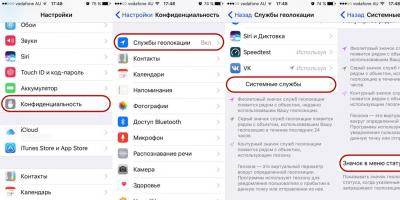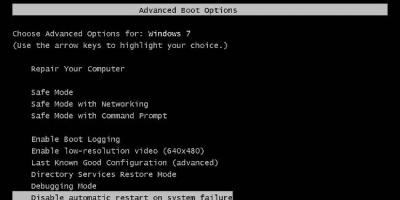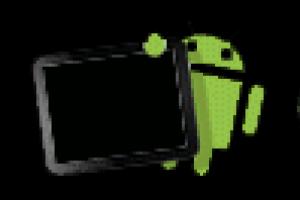Lecture on the anatomy of mobile devicesin. Navigation (GPS, GLONASS, etc.) in smartphones and tablets. Sources of errors. Test methods.
More recently, in retail chains, you could buy devices called "Navigators". The main function of these devices fully corresponded to their name, and they performed it, as a rule, well.
At that time, the only normally working navigation system in the world was the American GPS (Global Positioning System), and it was enough for all needs. Actually, the words "navigation" (navigator) and GPS were synonymous at that time.
Everything changed when manufacturers of PDAs (handheld computers), and then smartphones and tablets, began to build navigation support into their devices. Physically, it was implemented in the form of built-in navigation signal receivers. Sometimes navigation support could be found even in feature phones.
From that moment on, everything changed. Navigators, as separate devices, have almost disappeared from both production and sale. Consumers have moved en masse to use smartphones and tablets as navigation devices.
In the meantime, two more navigation systems were successfully put into operation - the Russian GLONASS and the Chinese Beidou (Beidou, BDS).
But this does not mean that something has become better in terms of navigation. The navigation function in these devices (smartphones and tablets) has become not the main one, but one of many.
As a result, many users began to notice that not all smartphones are "equally useful" for navigation purposes.
This is where we come to the problem of determining the sources of errors in navigation, including the question of the role of device manufacturers' dishonesty in this matter. Sad but true.
But before blaming manufacturers for all the sins, let's first deal with the sources of errors in navigation. For the producers, as we will find out later, are not guilty of all sins, but only of half. :)
Errors in navigation can be divided into two main classes: caused by external causes relative to the navigation device, and internal.
Let's start with external causes. They arise mainly due to the unevenness of the atmosphere and the natural technical error of measuring instruments.
Their contribution is as follows:
Signal refraction in the ionosphere ± 5 meters;
- Satellite orbit fluctuations ± 2.5 meters;
- Satellite clock error ± 2 meters;
- Irregularity of the troposphere ± 0.5 meters;
- Influence of reflections from objects± 1 meter;
- Measurement errors in the receiver ± 1 meter.
These errors have a random sign and direction, so the final error is calculated in accordance with the probability theory as the root of the sum of squares and is 6.12 meters. This does not mean that the error will always be the same. It depends on the number of visible satellites, their relative position, and most of all - on the level of reflections from surrounding objects and the influence of obstacles on the attenuation of satellite signals. As a result, the error can be either higher or lower than the given "average" value.
Weakening of signals from satellites can occur, for example, in the following cases:
- while staying indoors;
- when standing between closely spaced high objects (between high-rise buildings, in a narrow mountain gorge, etc.);
- while in the forest. As experience shows, dense high forest can significantly impede navigation.
These problems are due to the fact that high-frequency radio signals travel like light - that is, only within line of sight.
Sometimes navigation, albeit with errors, can work on signals reflected from obstacles; but with multiple reflections, they become so weak that navigation stops working with them.
Now let's move on to the "internal" causes of errors. in navigation; those. which are created by the smartphone or tablet itself.
Actually, there are only two problems here. Firstly, the low sensitivity of the navigation receiver (or problems with the antenna); secondly, the “curve” software of a smartphone or tablet.
Before considering specific examples, let's talk about ways to check the quality of navigation.
Navigation testing methods.
1. Testing navigation in "static" (when the smartphone / tablet is stationary).
This check allows you to determine the following parameters:
- the speed of the initial determination of coordinates during a "cold start" (detected by the clock);
- a list of navigation systems that this smartphone / tablet works with (GPS, GLONASS, etc.);
- estimated accuracy of determining the coordinates;
- speed of determination of coordinates at "hot start".
These parameters can be determined both with the help of conventional navigation programs, and with the help of special test programs (which is more convenient).
The rules for testing in "static" are very simple: testing must be done in open space(wide street, square, field, etc.) and when internet is off. If the latter requirement is violated, the “cold start” time can be significantly accelerated by directly downloading satellite orbits from the Internet (A-GPS, assisted GPS) instead of determining them from signals from the satellites themselves; but it will already be “not fair”, since it will no longer be the pure work of the navigation system itself.
Consider an example of the operation of the AndroiTS navigation testing program (there are also analogues):

(click to enlarge)
The picture just presented shows that the smartphone works with three navigation systems: American GPS, Russian GLONASS and Chinese Beidou (BDS).
At the bottom of the screenshot, you can see the successfully determined coordinates of the current location. The value of one degree in latitude is approximately 100 km, respectively, the price of a unit of the least significant digit is 10 cm.
The value of one degree in longitude is different for different geographical locations. At the equator, it is also about 100 km, and near the poles it decreases to 0 (at the poles, the meridians converge).
To the right of the column with the designation of the nationality of the satellites, there is a column with the numbers of the satellites. These numbers are rigidly tied to them and do not change.
Next are the columns with colored bars. The size of the bars means the signal level, and the color - their use by the navigation system or not. Unused satellites are indicated by gray bars. The color used depends on their signal strength.
The next column is also the level of the signal from navigation satellites, but already in numbers ("conventional units").
Then comes a column with green checkmarks and red dashes - this is a repetition of information about whether the satellite is used or not.
On the top line, the word "ON" indicates the status of the navigation state; in this case, this means that the smartphone settings allow the determination of coordinates and they are defined. If the status "WAIT" is indicated there, then the determination of the coordinates is allowed, but the required number of satellites has not yet been found. Status "OFF" means that in the smartphone settings, the determination of coordinates is prohibited.
Then a circle with concentric circles and the number 5 indicates the estimated accuracy of determining the coordinates at the moment - 5 m. This value is calculated based on the number and "quality" of the satellites used and assumes that the processing of data from satellites in the smartphone is done without errors; but, as we shall see below, this is not always the case.
As the satellites move, all of this data should change, but the coordinates (on the bottom line) should change only slightly.
Unfortunately, this application does not show the time spent on the initial determination of coordinates ("cold start"), and other similar applications do not. This time must be "marked" manually. If the cold start time was less than a minute, then this is an excellent result; up to 5 minutes - good; up to 15 minutes - medium; more than 15 minutes - bad.
To determine the “hot start” speed, it is enough to exit the testing program and re-enter after a few minutes. As a rule, during the launch of the test program, it manages to determine the coordinates and immediately presents them to the user. If the delay with the presentation of coordinates during a “hot start” exceeds 10 seconds, then this is already suspiciously long.
The effect of fast determination of coordinates during a “hot start” is due to the fact that the navigation system remembers the last calculated satellite orbits and does not need to re-determine them.
So, we figured out testing navigation in “statics”.
Let's move on to the 2nd point of navigation testing - in motion.
Navigation's main purpose is to get us to the right place while we're moving, and without checking on the move, the test would be incomplete.
There are three types of terrain in terms of navigation: open terrain, urban areas, and forest.
Open areas are ideal navigation conditions, there are no problems here (except for completely "sucky" devices).
Urban development in most cases is characterized by the presence of a high level of reflections and a slight decrease in the signal level.
The forest "works" the other way around - a significant signal attenuation and a small level of reflections.
First, let's look at a sample of a near-perfect track:

The picture shows two tracks: there / back (this will continue in almost all pictures). Such pictures make it possible to draw a reliable conclusion about the quality of navigation, since two almost identical tracks can be compared with each other and with the road. In this picture, everything is fine - the oscillations of the track are within the limits of the natural error. In the upper part, the passage on different sides of the roundabout is adequately drawn. In some places, a discrepancy between the tracks is noticeable, probably caused by signal reflections from the water surface and from the metal structures of the bridge over the river. And some are almost perfect matches.
Now let's analyze several typical cases of "problem" tracks.
Let's look at the GPS track of a smartphone, which was affected by signal drops in a high forest:

The discrepancy between the tracks with each other and with the road is noticeable, but far from catastrophic. In this case, the accuracy of navigation in the smartphone has decreased within the "natural decline" for such conditions. Such a smartphone must be recognized as suitable for navigation purposes.

In the right part of the screenshot, the discrepancies between the tracks and the road are clearly visible. Such discrepancies in the conditions of such a "well-shaped" development are almost inevitable, and in this case they do not in any way testify against the tested smartphone.
Theoretically, the more navigation systems a smartphone (tablet) supports, the more satellites it uses for navigation and the smaller the error should be.
In practice, this is not always the case. Quite often, due to "crooked" software, a smartphone cannot correctly dock data from different systems, and as a result, abnormal errors occur. Let's look at a few examples.
Take, for example, this track:

The screenshot just above shows a needle-shaped ejection, which could not be the result of any interference: the path passed through low-rise buildings without dense forest park plantings. This release is entirely on the conscience of the "crooked" software.
But it was still "flowers". There are smartphones where abnormal navigation errors are no longer “flowers”, but “berries”:

During the recording of this track, anomalous errors of the "crooked" software were combined with the weakening of signals in the high forest. The result is a track that makes it impossible to guess that the way back and forth was walked along the same path by a sober person. :)
And a thick bunch of lines in the upper part is the "path" of a motionless smartphone during a halt. :)
There is another type of anomalous errors associated with a pause in the data stream coming from the navigation receiver to the computing part of the smartphone:

This picture shows that part of the path (about 300 m) went in a straight line, moreover, partly straight through the water. :)
In this case, the smartphone simply connected the points of loss and the appearance of the coordinate stream with a straight line. Their loss could be associated with a decrease in the number of visible satellites below the critical number, or with "crooked" software and even hardware problems (although the latter is unlikely).
In the case of a complete loss of signals from satellites, navigation programs usually do not connect the points of loss and appearance with straight lines, but simply leave an "empty space" (a break in the track is obtained):

This picture shows a break in the track in the place where part of the path passed through the underpass with the complete loss of visibility of all satellites.
After studying the causes and typical navigation errors, it is time to jump to conclusions.
The best navigation, as you might expect, is found in smartphones and tablets of "high" brands. With them, problems in the form of anomalous errors have not yet been detected. And, of course, the more navigation systems a device supports, the better. True, support for the Chinese Beidou still makes sense when using the device in regions and countries located near the Middle Kingdom. The Chinese navigation system is not global, but "local" (at the moment). So support for GPS and GLONASS will be enough.
If the smartphone or tablet is not of a very "famous" origin, then there may or may not be problems with navigation. Before its combat use, it is recommended to test it both in static and in motion in various environments, so that later it does not give any unpleasant surprise. In most cases, GPS-only mobile devices cause fewer problems, although their accuracy is lower than that of multi-system devices.
Unfortunately, when choosing a smartphone (tablet) with good navigation, it is quite difficult to navigate through device reviews on the Internet. The vast majority of IT portals ignore checking navigation on the move and in difficult conditions. Such a check is done only on this portal () and literally on a couple of others.
Finally I must say that navigation aids are now equipped not only with smartphones and tablets, but also with many other devices. They are installed, for example, in cameras, camcorders, GPS trackers, car DVRs, smart watches, some specialized types of devices, and even in the Platon electronic system for taxing drivers of Russian heavy trucks.
Your Doctor.
20.01.2017
- 2000-2003: Beidou experimental system of three satellites.
- by 2012: Regional system to cover China and surrounding areas.
- by 2020: Global Navigation System.
Beidou-1
The first satellite, Beidou-1A, was launched on October 30, 2000. The second, "Beidou-1B", - December 20, 2000. The third satellite, "Beidou-1C", was launched into orbit on May 25, 2003. The system was considered operational with the successful launch of the third satellite.
On November 2, 2006, China announced that from 2008, Beidou will offer open services with a location accuracy of 10 meters. Beidou system frequency: 2491.75 MHz.
On February 27, 2007, a fourth satellite was also launched as part of Beidou-1, sometimes referred to as Beidou-1D and sometimes Beidou-2A. He performed the functions of a safety net, in case of failure of one of the previously launched satellites. It was reported that the satellite had problems in the control system, but they were subsequently eliminated.
Beidou-2
In April 2007, the first satellite of the Beidou-2 constellation, named Compass-M1, was successfully launched into orbit. This satellite is a tuning satellite for Beidou-2 frequencies. The second satellite, Compass-G2, was launched on April 15, 2009. The third ("Compass-G1") was launched into orbit by the Long March-3C carrier on January 17, 2010. The fourth satellite was launched on June 2, 2010. The Long March-3A carrier launched the fourth satellite from the satellite site in Xichang on August 1, 2010.
On February 24, 2011, 6 active satellites were deployed, 4 of them are visible in Moscow: COMPASS-G3, COMPASS-IGSO1, COMPASS-IGSO2 and COMPASS-M1.
According to some sources, at the beginning of 2011, the PRC State Council revised the architecture of the system and made adjustments to the spacecraft launch plan. It was decided to complete the formation of the orbital constellation to serve the regional consumer by the beginning of 2013. According to the adjusted schedule, the Compass/Beidou constellation by the beginning of 2013 will include 14 spacecraft, including: 5 satellites in geostationary orbit (58.5° E, 80° E, 110.5° east, 140° east, 160° east); 5 satellites in inclined geosynchronous orbit (altitude 36,000 km, inclination 55°, 118° E); 4 satellites in medium earth orbit (altitude 21500 km, inclination 55°).
December 27, 2011 "Beidou" was launched in test mode, covering the territory of China and neighboring areas.
On December 27, 2012, the system was launched into commercial operation as a regional positioning system, with a satellite constellation of 16 satellites.
On May 8, 2014, the system passed an expert review, during which it was found that in the Tianjin area, the accuracy is less than 1 meter due to the newly built ground correction station. .
Beidou-3
It is planned to deploy a global navigation system consisting of 35 spacecraft by 2020 (according to other sources - 36 spacecraft, according to third - 37 spacecraft), including: 5 satellites in geostationary orbit; 3 satellites in inclined geosynchronous orbit; 27 satellites in medium earth orbit; a few extra satellites will probably make up the orbital reserve.
5 geostationary satellites ( Beidou-3G) will be located at orbital positions 58.5°, 80°, 110.5°, 140° and 160° east longitude and will be launched as the service life of the already operating second-generation vehicles ends. The satellites are based on the Chinese space platform DFH-3B, their launch weight will be about 4600 kg.
3 satellites ( Beidou-3I), which will be located in a geosynchronous orbit with an inclination of 55 °, are based on the same platform, with lower power and less weight - about 4200 kg.
27 satellites ( Beidou-3M) for placement in medium Earth orbit (altitude about 21,500 km, inclination 55°) are based on a new, more compact space platform using some parts of the proven DFH-3B platform. The dimensions of the satellite in the folded state will be 2.25 × 1 × 1.22 m, the launch weight is 1014 kg. After completion of the launch of all satellites into space, they will be placed on 3 orbital planes, 9 vehicles each. Can be launched into orbit one by one using the Long March-3C launch vehicle and the upper stage YZ-1; 2 satellites each using the Long March-3B launch vehicle and the YZ-1 upper stage; as well as 4 satellites at a time with the future Long March 5 launch vehicle and YZ-2 upper stage.
In 2015, the first new generation satellites were launched: 2 to medium earth orbit (BDS M1-S and BDS M2-S ) and 2 to inclined geosynchronous orbit (BDS I1-S and BDS I2-S ).
What is Beidou in a smartphone?
Among the characteristics of modern smartphones, in the "Navigation" section, one can increasingly find mention of a certain "BeiDou" or "BDS". Naturally, many potential buyers have questions about what all the same it is and what it is for. And, even those who are beginning to understand what it is, are interested in whether this function will work in Europe and, in fact, in their place of residence.
In this article we will tell you what kind of technology it is. If you are looking for devices with BeiDou, we advise you to pay attention to the oukitel smartphone - a productive and powerful device equipped with everything you need.
So, Beidou is a combined navigation system developed and launched by China. Its operation began in 2000 as an alternative to the American GPS system and the Russian GLONASS. Initially, the system was conceived for use by the armed forces, but recently it has been extended to civilian use.
The principle of Beidou operation is similar to other navigation systems. It consists of ground and space parts. So, the space part includes a group of satellites located in medium near-Earth orbits. The complex, located on the ground, consists of base stations that determine the location, speed up the system and increase the accuracy of determining a point on the map. The main group of ground stations is located in China, as well as allied countries. The satellite group partially operates in Europe.

The computing processes of the Beidou navigation system follow a similar algorithm as in GPS. That is, navigation occurs due to the measurement of the duration of the signal from the transmitter to the receiver. From the coordinates of at least 3 sources, you can make fairly accurate calculations with an error of up to 2 meters.
Today, devices from Chinese companies are supplied with this navigation system. In particular, this system is built into smartphones for the Asian and Chinese domestic markets. Manufacturers have managed to ensure that both Beidou and GPS can work in parallel.
In order to check your phone for the presence of the Beidou navigation system, you need to install the AndroiTS GPS Test application, in it go to the tab with the list of satellites. Entering the tab, find the red flags - these will be Chinese satellites operating on the Beidou base.
- | - |
- | - |
- |
When buying a smartphone or exploring its capabilities, there is information that this device supports Beidou or BDS.
In this regard, many become interested in what kind of system we are talking about, what it is, and what new functions and opportunities it offers.
What is Beido?
Beidou is a new navigation system developed in China. She received in honor of the constellation Ursa Major, or rather her Chinese name. Beidou launched in 2000. This system is a direct analogue and competitor of the US-developed GPS system and the Russian GLONASS system. It also applies to both the armed forces and ordinary civilian users.
Title and relevance
To draw conclusions about the relevance of Beidou for smartphone owners outside of China, you need to know the coverage area of the technology, as well as the number of satellites and ground base stations that provide navigation support.
Beidou is currently operating in a reduced functionality mode, as stable satellite reception is only achieved over China. Over the rest of the land, the signal is less stable, due to the insufficient number of orbiters. Chinese developers promise complete coverage of the entire globe by 2020. Over the European part of Russia, as well as over Eastern Europe, at the beginning of 2017, a stable signal from six satellites was noticed, and one base station was successfully built and launched on the territory of Belgium.

Undoubtedly, the creation by China of its own navigation system gives this country a number of advantages both in foreign policy and general civil spheres. The country plans to significantly increase the number of active satellites, and in terms of number they will significantly exceed the existing GLONASS and GPS satellites.
Beidou in smartphones
But let's leave aside the arguments about the military sphere and world domination, let's talk about ordinary smartphone owners. It is obvious that the citizens of China will have access to the most stable navigation system in the near future. Due to the large number of satellites, access to geodata must be open and in difficult conditions, such as in tunnels.

What steps are smartphone manufacturers taking in this direction? Most Chinese brands provide parallel operation of Beidou, GPS and GLONASS. Other firms divide gadgets according to the market to which they will be supplied.
The ability of a smartphone to use the Beidou (Beidou) system is welcome, but not mandatory. Of course, it's nice to have an additional navigation system in stock, but at the moment it is unlikely to be useful to users outside of China.







